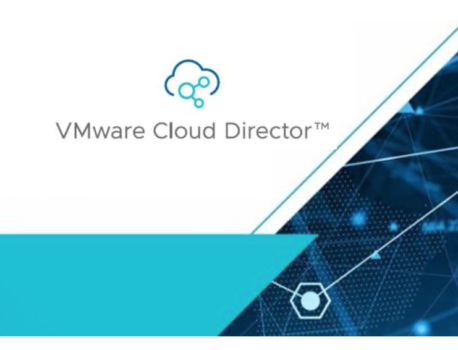Hi everyone. Today we bring you the news of the latest version of VMware Cloud Director and its functionalities.
VMware Cloud Director provides extensive automation for service delivery of infrastructure, network, security services and container, object storage and marketplace applications.
VMware Cloud Director version 10.2.2 includes the following:
- Tanzu Kubernetes Cluster Tenant Network Isolation – Tanzu Kubernetes clusters are now only reachable from workloads within the same organization virtual data center in which a cluster is created.
- Tanzu Kubernetes Cluster Pod and Services CIDR selection – During the creation of a Tanzu Kubernetes cluster, we can specify ranges of IP addresses for Kubernetes services and Kubernetes pods.
- VMware Cloud Director uses its management network for communication with Tanzu Kubernetes Clusters – The VMware Cloud Director management network is a private network that serves the cloud infrastructure and provides access for client systems to perform administrative tasks on VMware Cloud Director. Earlier releases use the Kubernetes service network.
- VMware Cloud Director appliance SNMP agent – We can configure the agent to listen for polling requests. If there is a preexisting Net-SNMP agent, during the upgrade, the VMware Cloud Director appliance replaces the Net-SNMP installation with VMware-SNMP. During VMware-SNMP set-up, the VMware Cloud Director appliance configures dynamically the firewall rules required for SNMP operation. We must remove any existing firewall rules that work with Net-SNMP before the upgrade.
- Global Placement Policy – Service providers can define placement policies that work effectively across all vCenter Server instances and clusters in a VMware Cloud Director environment. A single placement policy can point to hosts that span multiple clusters in one or more vCenter Server instances. Boundaries in underlying infrastructure are abstracted away behind the global logical construct of a placement policy making for a more logical experience for both service providers and tenants. This change enables capturing the placement policy when a vApp Template is created from a VM; the resulting vApp Template will inherit any placement policy from the original VM even if the VM and vApp Template are in different Provider VDCs.
- Guest Customization for Encrypted VMs – VMware Cloud Director 10.2.2 fully supports guest customization of VMs that run on encrypted storage.
- Organization Virtual Data Center Templates – We can create and share virtual data center (VDC) templates with tenant organizations so that organization administrators can use the templates to create VDCs. VMware Cloud Director 10.2.2 supports the use of NSX-T based networking with the organization VDC templates.
- Storage Policy Update – Service providers can use storage policies in VMware Cloud Director to create a tiered storage offering, for example, Gold, Silver, and Bronze, or even offer dedicated storage to tenants. With the enhancement of storage policies to support VMware Cloud Director entities, we have the flexibility to control how you use the storage policies. We can have not only tiered storage, but isolated storage for running VMs, containers, edge gateways, and so on.
A common use case that this update addresses is the need for shared storage across clusters or offering lower cost storage for non-running workloads. For example, instead of having a storage policy with all VMware Cloud Director entities, you can break your storage policy into a “Workload Storage Policy” for all our running VMs and containers, and dedicate a “Catalog Storage Policy” for longer term storage. A slower or low cost NFS option can back the “Catalog Storage Policy”, while the “Workload Storage Policy” can run on vSAN. - FIPS Support – This release of VMware Cloud Director includes support for the Federal Information Processing Standards. Both the VMware Cloud Director appliance and Linux binary can run in FIPS-compliant mode. FIPS mode is disabled by default. Enabling FIPS mode might affect the performance of VMware Cloud Director. If metrics collection is configured, verify the configuration of the server and client communication with Cassandra over SSL.
- Direct VDC Networks Support in Organization VDCs backed by NSX-T Data Center – Service providers can create direct organization VDC networks in VDCs backed by NSX-T Data Center.
- Autoscaling – Scaling groups are a new top level object that tenants can use to implement automated horizontal scale-in and scale-out events on a group of workloads. We can configure auto scale groups with a source vApp template, a load balancer network, and a set of rules for growing or shrinking the group based on the CPU and memory use.
- Guided Tours Update – Service providers can publish custom-built guided tours and scope the tours to system administrators or tenants. Starting with VMware Cloud Director 10.2.2 you can download guided tours from a VMware Github repository or a custom Github repository.
- Removing Static T-shirt Size – VMware Cloud Director 10.2.2 no longer supports the use of the predefined virtual machine sizes available since vCloud Director for Service Providers 9.0. We can use the VM sizing policy functionality to provide predefined VM sizing.
Documentation
For information about system requirements and installation instructions, see VMware Cloud Director 10.2.2 Release Notes
For information on appliance configuration and sizing, see the guidelines in VMware Cloud Provider Pod Designer – VMware Validated Designs for Cloud Providers.
VMware Cloud Director Documentation
More Links
Cloud Services
VMware Cloud Director
VMware Cloud Provider
VMware Cloud Director Business Enablemet Training
Closing Notes
I hope it has been useful to you. See you next!


